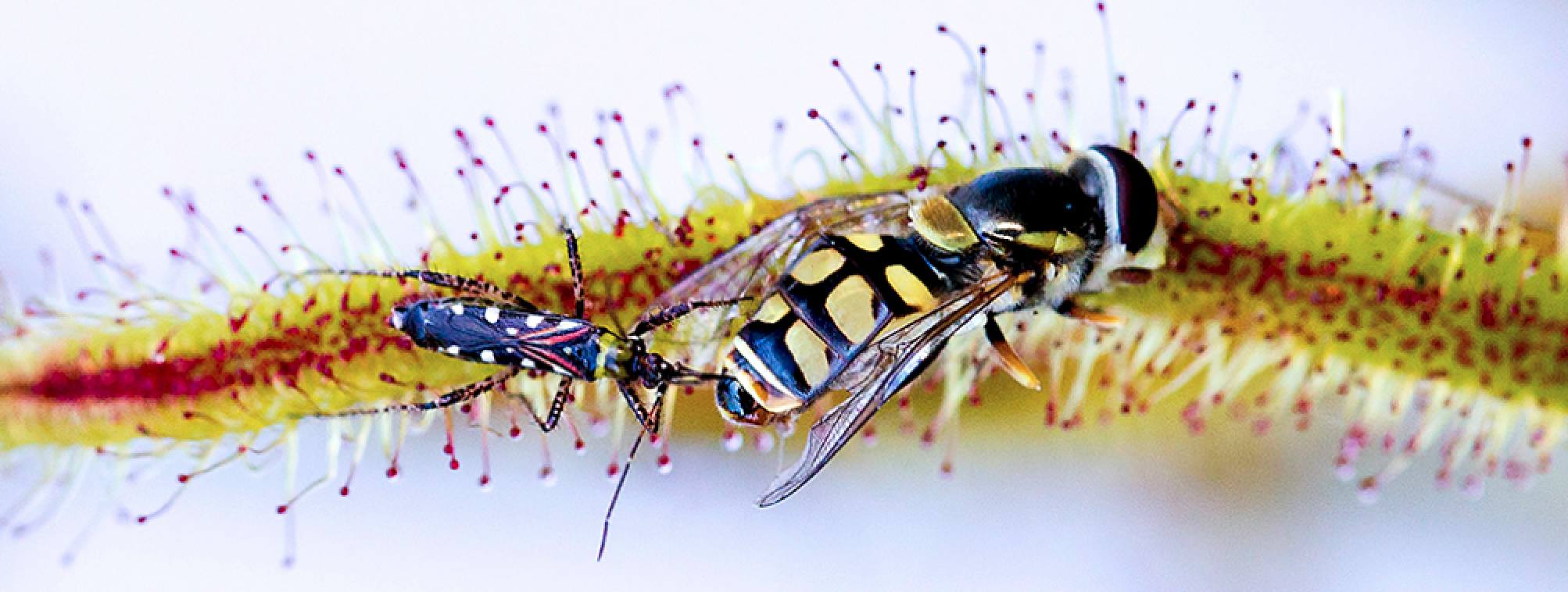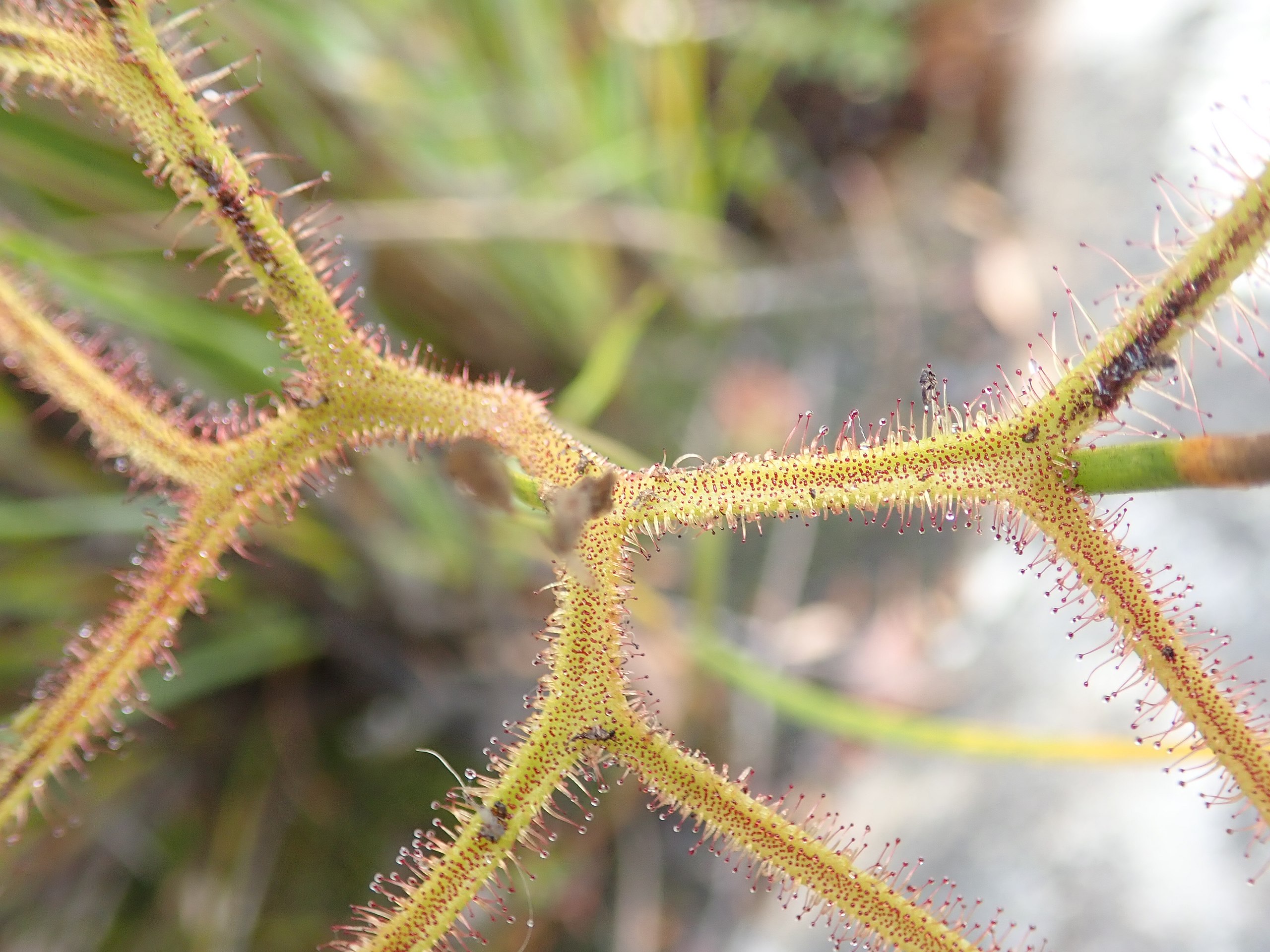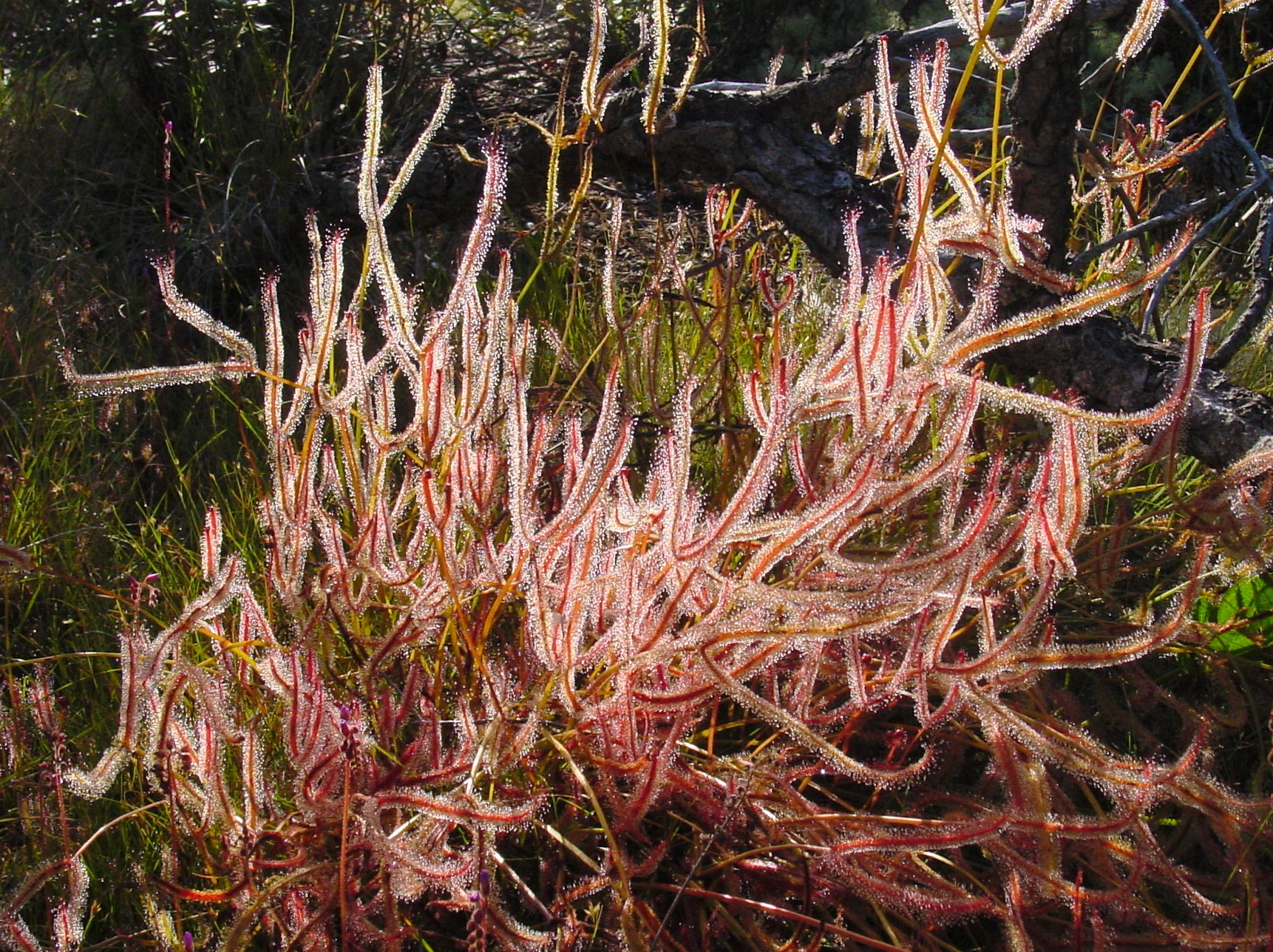Drosera Binata, commonly known as the forked sundew or fork-leaved sundew, is an especially beautiful plant native to Australia and New Zealand, with stunning red flower-like structures called inflorescences that bloom during the summer months. These spectacular flowers grow out of the plant’s sticky leaves, which lure in insects to be trapped and eaten by the plant. Like all sundews, Drosera Binata has two forms of leaves: sticky, insect-trapping leaves at ground level and plainer leaves higher up on the stem.
Blackheath in the Blue Mountains had and maybe still has the world’s largest and most impressive display of Drosera Binata. Like all sundews, it’s a Carnivorous plant. When its leaves are fully developed, they can be up to 2 metres long.
The carnivorous nature of the plant means that when an insect lands on one of these leaves, which secrete digestive enzymes on contact with water and then trap their prey in an adhesive mass of mucilage. The insect slowly dies within this gooey substance while nutrients are absorbed by the plant. It’s no wonder that people have called them killer plants!
Great ABC info: www.abc.net.au/radionational/programs/offtrack/flora-fatale/10514554
Drosera Binata is a species of carnivorous plant with an adapted leaf structure that looks like a hairbrush to capture, store and digest insects. It emits a sticky substance called ‘dew’ which helps the plant to snare its prey. For example, when small flies walk onto their leaves, they will be trapped and slowly consumed.
The production of these fluids is triggered by salt in the soil or rainwater on its surface. Rainfall causes nectar-producing glands on the sundew’s leaves to produce sugar-rich nectar droplets, while contact with salty water induces dew formation. As the dew accumulates in little pools near the tentacles, it may form bubbles from dissolved oxygen gas produced by photosynthesis.
The plant sends down long tentacles from a central rosette up to five meters in diameter. Each tentacle ends with a cluster of stalked glands that contain digestive enzymes, waiting for prey animals like flies to land on them.
These enzymes break down proteins in animal exoskeletons, allowing water and nutrients to seep into what’s left over. These nutrients then travel up to feed non-photosynthetic tentacles (fungus-like strands) inside of its leafy center. This method is similar to how Venus flytraps ensnare their prey, but Drosera binata differs in one key respect: It has not just leaves, but actual roots that grow down into the soil.
Prey is usually killed in less than a minute and digestion begins soon after that. The tentacles contract and evert or turn inside out, making a small chamber for the digestive fluids to flow down into from above. Eventually, it digests their prey entirely and then secretes enzymes from its body wall into that space to digest its own prey’s body until all that remains is nutrient-rich droplets. These can either be collected by the plant as well to supplement their nutrients or left behind to enrich soil.
Droseras are noted for their active movements, and can completely change in appearance between periods of activity and dormancy. The tentacles close during darkness or cool conditions as a protective measure to prevent water loss.
This fluid contains additional enzymes which dissolve the trapped insect’s body leaving only its exoskeleton behind – this is what you can see on the surface of the leaf after trapping an insect; much like jewellery glittering in the sun.
Along the track from Govetts Leap to Horseshoe Fall, Blackheath, it’s hard to miss the sheer size and complexity of sundews. It’s not just that they’re big and hairy, with leaf-like tentacles (actually modified leaves) at their base that act as sensitive feelers. In winter, these can grow up to 2 meters in length; long enough to droop off steep banks or overhanging cliffs.
Drosers are an interesting example of how Carnivorous plants adapt to their environment. When they grow in areas that don’t have many insects, they tend to photosynthesise. They have a sweet nectar-like sap which lures flies into its trapping hairs and traps them there, digesting them until only nutrient-rich remains are left for the Droser to consume.




